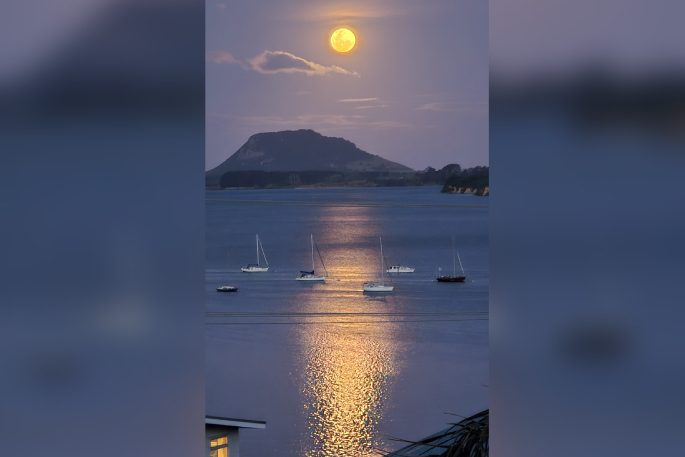A supermoon graced the skies of New Zealand overnight on Wednesday as some Asian communities celebrated their lunar festivities.
But those in the Northern Hemisphere witnessed a combination of a 'Harvest Moon', supermoon and a partial eclipse.
The 'Harvest Moon' is a full moon that occurs closest to the start of autumn in the Northern Hemisphere. It results in a few nights of early moonlight in the evenings, which farmers have traditionally used to harvest their summer crops.
People in the Europe, USA, Africa, and parts of Asia will see the partial eclipse, but it wasn't visible in New Zealand because it was daytime for us - about 2.44pm.
However, New Zealanders in cities with clear skies would have noticed the somewhat larger moon on Wednesday night, Stardome astronomer Josh Aoraki said.
A supermoon would have been "slightly larger, slightly brighter in the sky, and just a bit more spectacular than a regular full moon".
"A supermoon is simply just when the moon is slightly closer to us, that's 'cause the moon's orbit is elliptical," said Aoraki.
"As for the name Harvest Moon, these names usually don't apply to the Southern Hemisphere."
What is the connection to our lunar festivities?
Chinese and Vietnamese communities celebrate the Harvest Moon during the Mid-Autumn Festival, also known as the Moon Festival or Reunion Festival.
It is called the Reunion Festival because families and loved ones gather to witness a larger than usual sighting of the moon as the clear air arrives with the change of seasons in northern parts of Asia.
The festival was initially celebrated by the heads of ancient Chinese dynasties, who would celebrate the bountiful autumn harvest with their subjects. Over time, however, the general population started to celebrate the occasion, enshrining it as an important annual cultural event.
The celebration is traditionally observed on the 15th day of the eighth lunar month. The holiday falls on September 17 this year.
When is New Zealand's next eclipse?
Two lunar eclipses will be visible in New Zealand in March and September next year as well as a partial solar eclipse in September next year.



0 comments
Leave a Comment
You must be logged in to make a comment.